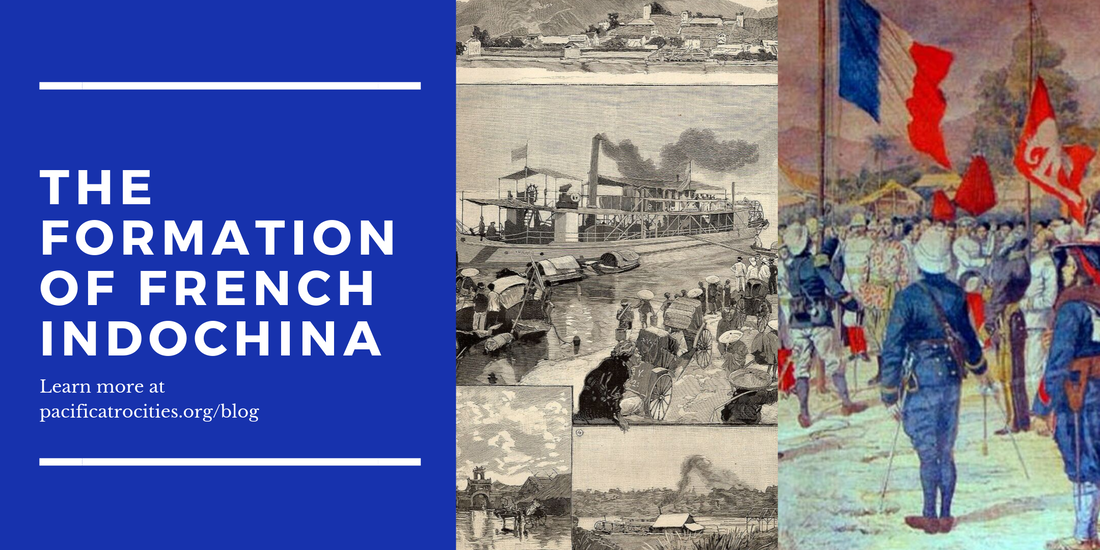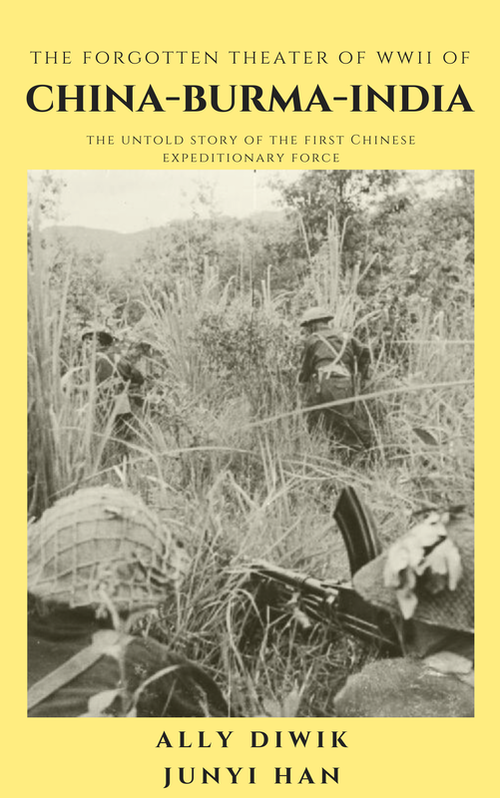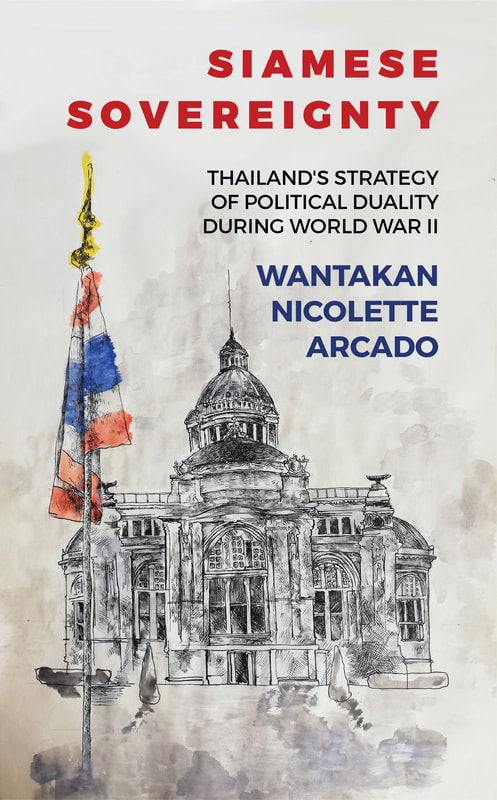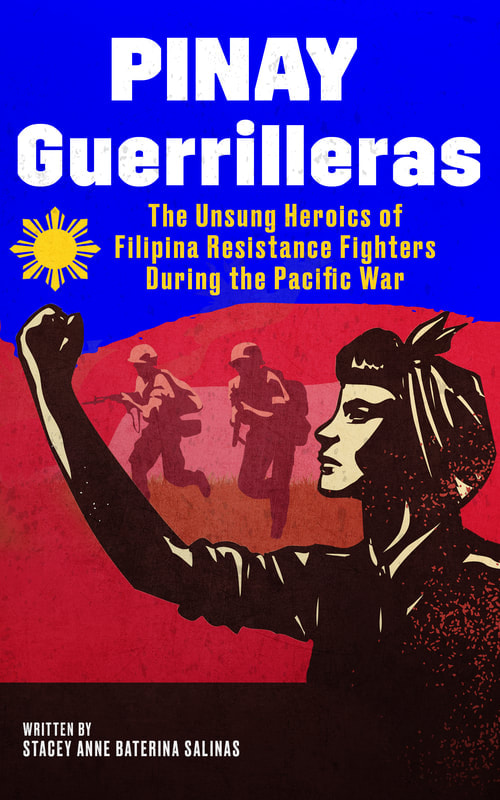|
Pre-colonized Vietnam was split into three states, Cochinchina, Annam, and Tonkin. Cochinchina covered the most southern part of Vietnam in which its primary city was Saigon. Annam was the central state of Vietnam where the ancient capital of Vietnam, Hue, was located. Tonkin was the most northern region where its main city was Hanoi.
The first European arrival to Indochina, which was made up of Vietnam, Cambodia, and Laos, began with Portuguese and Dutch missionaries during the 16th and 17th centuries, respectively. These missionaries’ main objective was to start up trading posts along the Vietnamese coast.
During the mid-1620s, Jesuit priest, Father Alexandre de Rhodes, arrived in Cochinchina and traveled throughout Vietnam to Tonkin. While in Vietnam, de Rhodes learned the language through speaking with villagers and would write several books chronicling his experience in Vietnam, as well as contain a part in which de Rhodes expresses his interest in the language. In 1630, de Rhodes was expulsed from Vietnam for his preaching of Catholicism where he was able to convert over 6,000 Vietnamese. In 1640, de Rhodes returned to Cochinchina to continue establishing missionaries. In 1645, he would be executed, but by this time, there would be a total of over 120,000 Vietnamese who converted to Christianity. Father de Rhodes was important because through his contribution, he was able to spread Catholicism in a major way in Vietnam and through his books, many others would follow his path to use Southeast Asia to spread Christianity and establish trading networks. Following these European missionaries, there would be an escalation of desire to not only control ports along Vietnam, but also control Southeast Asia to control a major trading line. The end of the 17th century saw the first arrival of the French in the form of the French East India Company trading organization who were there to establish a trading network in Southeast Asia and spread Catholicism through missionaries. Due to prejudice against Christians and foreigners, after a few centuries of the French establishing missions and trading ports across the Vietnamese coast, the French missionaries, traders and soldiers were attacked by the local Vietnamese. In retaliation, the French waged wars against Vietnamese local tribes and planned to take control over Indochina to establish their colony. In 1862, French and Vietnamese emissaries met in Saigon to cease the war and come to a negotiation. The treaty granted France with Cochinchina where missionaries had the freedom to build missions and preach. France also gained the freedom to allow ships in through the Mekong Delta and open coastal ports to open trade with the west. In 1863, Cochinchina gained its first governor, Admiral Pierre-Paul de la Grandiere, who took an interest in international affairs with Cambodia and the Cambodian monarchy. As governor, La Grandiere signed a treaty with Cambodia granting protection for trade. La Grandiere proposed the expansion into Tonkin in northern Vietnam. As a result, he issued two expeditionary forces to invade Tonkin. While the first expeditionary advance failed in 1868, the second one, launched in 1883, was able to successfully control Hanoi. Following the capture of Hanoi, there was a meeting, known as the Treaty of Hue, between the French and Vietnamese emperor Tu Duc. This treaty granted France full control over Vietnam. The French government followed their victory by merging their colonies into a single state under one authority figure. This state would be known as the Indochinese Union, or French Indochina. Along with the colonies of Vietnam, it would also include Laos and Cambodia. France altered the political and economic structure of French Indochina to be able to benefit their ways of governing and to make it easier to govern under French rule. Firstly, France moved the capital from Hue to Hanoi which changed the administrative and political central focus of French Indochina closer to China and the Red River Delta. France also established a governor general who would be in charge from Hanoi over all of French Indochina, while governors of smaller colonies, for example, Cochinchina, would work under the governor general. The governor general was also supported by the Upper Council of Indochina, five directors in charge of the colonies’ services. The French had not only altered Vietnam’s political system, but also changed the social and economic environment within French Indochina. Paul Doumer, in 1897, became General Governor of French Indochina and began forming departments to control finances, customs and monopolies, public works, agriculture and trade, the postal and telegraph service, and other state agencies to maintain civil and international services. Doumer organized three monopolies based around opium, salt, and alcohol. Based on these three items, France applied a heavy tax on these items for the Vietnamese and took away property if the taxes weren’t paid. These taxes were used to help govern the administrative cost of Indochina. The countries, particularly Vietnam, of French Indochina had economic benefits for France based on its natural resources. Vietnam produced rice, rubber and coal. The French government in Indochina began exporting these goods and using villagers to increase their work and increase production rates to keep up with demands. Vietnam became the third largest exporter of rice in the world behind Burma and Thailand. Tire companies such as the Michelin Tire Company bought thousands of acres of land in Vietnam to use the Vietnamese peasants to assist in working for these tire companies through producing rubber to build the tires in return the peasants would be able to keep their land although under French jurisdiction. The farmers, peasants, and coal miners, all of whom were Vietnamese, were underpaid and overworked to support French manufacturing and trading companies. French Indochina, in particular, Vietnam, through its geographical location and natural resources, became an important strategic economically, and later, militarily, country in Southeast Asia. For the next hundred years, many countries such as France and Japan would see Vietnam as a country to use for their own economic and military goals in which would turn their citizens against their oppressors leading into one of the most important wars in history. Resources
Related Books
1 Comment
Nam
12/17/2022 10:32:06 am
There is a mistake in the information provided; de Rhodes was not executed in 1645, but was given the death sentence which was reduced to exile. In fact, he died in 1660 in Persia.
Reply
Leave a Reply. |
- Home
- Stories
-
Internship
- Summer 2024 Internship
- Summer 2023 Internship
- Fall 2022 Internship
- Summer 2022 Internship
- Summer 2021 Internship
- Fall 2020- Spring 2021 Internship
- Summer 2020 Internship
- Fall 2019 Internship
- Summer 2019 Internship >
- School Year 2018-2019 Internship
- Summer 2018 Internship >
- Fall 2017 Internship
- Summer 2017 Internship >
- Books
- Archives
-
Resource Page
-
Supplementary Research Guides
>
- Unit 731 - Guide >
-
Philippines' Resistance - Guide
>
- Philippines World War II Timeline
- The Japanese Invasion & Conquest of the Philippines
- Bataan Death March
- Formation of Underground Philippines Resistance
- Supplies of the Guerrilla Fighters
- The Hukbalahap
- Hunter's ROTC
- Marking's Guerrillas
- United States Army Forces in the Philippines of Northern Luzon (USAFIP-NL)
- The Aetas
- Chinese and Filipino-Chinese Nationalist Guerrilla Units
- The Female Faces of the Philippine Guerrillas
- Rising Sun Flag - Guide >
- Pinay Guerrilleras - Guide >
- Fall of Singapore - Guide >
- Three Years and Eight Months - Guide >
- Siamese Sovereignty - Guide >
- The Khabarovsk War Crimes Trial - Guide >
- Unit 731 Cover-up : The Operation Paperclip of the East - Guide >
- Marutas of Unit 731 - Guide >
- Prince Konoe Memoir - Guide >
- Competing Empires in Burma - Guide >
- Battle of Shanghai - Guide >
- Ishi Shiro - Guide >
- Taiwan The Israel of the East - Guide >
- Seeking Justice for Biological Warfare Victims of Unit 731 - Guide >
- Rice and Revolution - Guide >
- Clash of Empires - Guide >
-
Hunger for Power and Self-SufficiencyI - Guide
>
- The Influence of War Rations on Post-War Culinary Transformations
- How World War II Complicated Food Scarcity and Invention
- American Military Innovations
- Government-Sponsored Food Inventions in Europe during World War II
- Feeding the Army: The Adaptation of Japanese Military Cuisine and Its Impact on the Philippines
- Mixed Dishes: Culinary Innovations Driven by Necessity and Food Scarcity
-
Denial A Quick Look of History of Comfort Women and Present Days’ Complication - Guide
>
- The Comfort Women System and the Fight for Recognition
- The Role of Activism and International Pressure
- The Controversy over Japanese History Textbooks
- The Sonyŏsang Statue and the Symbolism of Public Memorials
- Activism and Support from Japanese Citizens
- The Future of Comfort Women Memorials and Education
- Echoes of Empire: The Power of Japanese Propaganda - Guide >
- Lesson Plans >
-
Supplementary Research Guides
>
|
Pacific Atrocities Education
730 Commercial Street San Francisco, CA 94108 415-988-9889 |
Copyright © 2021 Pacific Atrocities Education.
We are a registered 501 (c)(3) charity. |
- Home
- Stories
-
Internship
- Summer 2024 Internship
- Summer 2023 Internship
- Fall 2022 Internship
- Summer 2022 Internship
- Summer 2021 Internship
- Fall 2020- Spring 2021 Internship
- Summer 2020 Internship
- Fall 2019 Internship
- Summer 2019 Internship >
- School Year 2018-2019 Internship
- Summer 2018 Internship >
- Fall 2017 Internship
- Summer 2017 Internship >
- Books
- Archives
-
Resource Page
-
Supplementary Research Guides
>
- Unit 731 - Guide >
-
Philippines' Resistance - Guide
>
- Philippines World War II Timeline
- The Japanese Invasion & Conquest of the Philippines
- Bataan Death March
- Formation of Underground Philippines Resistance
- Supplies of the Guerrilla Fighters
- The Hukbalahap
- Hunter's ROTC
- Marking's Guerrillas
- United States Army Forces in the Philippines of Northern Luzon (USAFIP-NL)
- The Aetas
- Chinese and Filipino-Chinese Nationalist Guerrilla Units
- The Female Faces of the Philippine Guerrillas
- Rising Sun Flag - Guide >
- Pinay Guerrilleras - Guide >
- Fall of Singapore - Guide >
- Three Years and Eight Months - Guide >
- Siamese Sovereignty - Guide >
- The Khabarovsk War Crimes Trial - Guide >
- Unit 731 Cover-up : The Operation Paperclip of the East - Guide >
- Marutas of Unit 731 - Guide >
- Prince Konoe Memoir - Guide >
- Competing Empires in Burma - Guide >
- Battle of Shanghai - Guide >
- Ishi Shiro - Guide >
- Taiwan The Israel of the East - Guide >
- Seeking Justice for Biological Warfare Victims of Unit 731 - Guide >
- Rice and Revolution - Guide >
- Clash of Empires - Guide >
-
Hunger for Power and Self-SufficiencyI - Guide
>
- The Influence of War Rations on Post-War Culinary Transformations
- How World War II Complicated Food Scarcity and Invention
- American Military Innovations
- Government-Sponsored Food Inventions in Europe during World War II
- Feeding the Army: The Adaptation of Japanese Military Cuisine and Its Impact on the Philippines
- Mixed Dishes: Culinary Innovations Driven by Necessity and Food Scarcity
-
Denial A Quick Look of History of Comfort Women and Present Days’ Complication - Guide
>
- The Comfort Women System and the Fight for Recognition
- The Role of Activism and International Pressure
- The Controversy over Japanese History Textbooks
- The Sonyŏsang Statue and the Symbolism of Public Memorials
- Activism and Support from Japanese Citizens
- The Future of Comfort Women Memorials and Education
- Echoes of Empire: The Power of Japanese Propaganda - Guide >
- Lesson Plans >
-
Supplementary Research Guides
>




